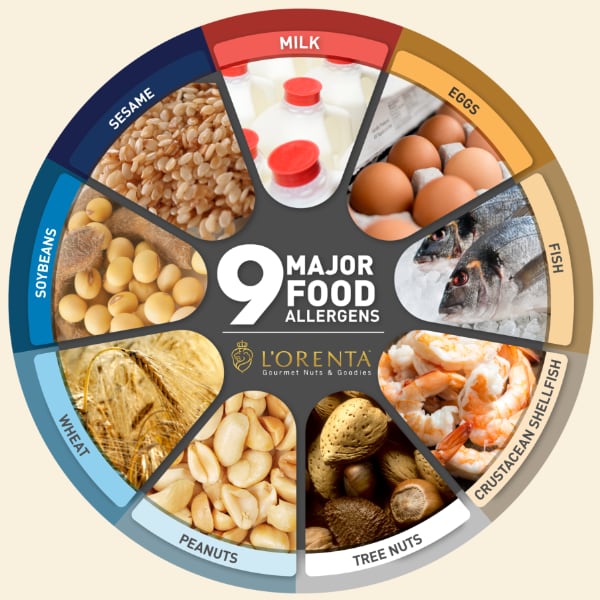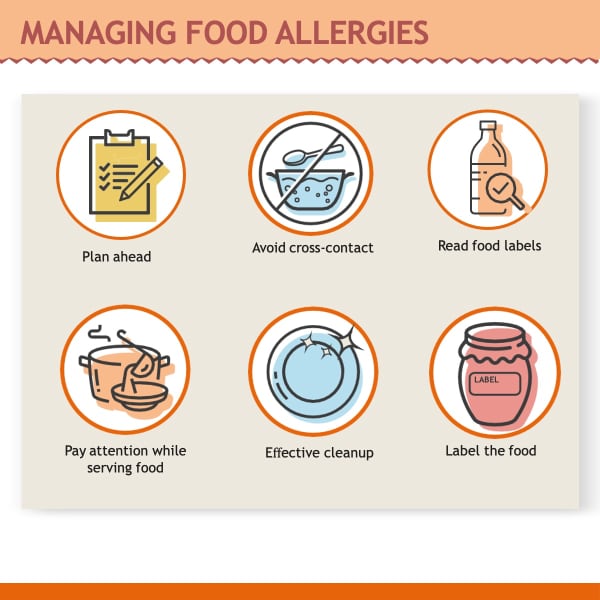Written By Sam Henselijn
Nut allergies are becoming more common, so knowing all about them is super important. In this guide, we’ll learn what nut allergies are, what symptoms they cause, how doctors diagnose them, and how to manage them safely.
What Are Nut Allergies?
Nut allergies happen when our body’s defense system, called the immune system, overreacts to proteins in certain nuts. It thinks these proteins are harmful and tries to fight them, causing allergic symptoms. Some nuts that commonly cause allergies are peanuts, almonds, walnuts, cashews, and hazelnuts.
Symptoms of Nut Allergies. When someone has a nut allergy, they might get different symptoms, like itching, hives (red bumps on the skin), or a rash. In more serious cases, they might have trouble breathing, swelling in their face or throat, a fast heartbeat, or their blood pressure might drop suddenly. This is called anaphylaxis. If someone has these symptoms after eating nuts, they need to see a doctor right away.
Diagnosis of Nut Allergies. Doctors use a few different things to figure out if someone has a nut allergy. They might ask questions about the person’s symptoms, what they eat, and if other people in their family have allergies. They might also do some tests, like a skin prick test or a blood test, to see if the person’s body reacts to nuts.
Research shows only 2% of the pediatric population is affected by allergies to tree nuts, and many will carry these allergies into adulthood.
Mcwilliam V, et al. The prevalence of tree nut allergy: a systemic review.
According to the FDA, the nine major food allergens are milk, eggs, fish, crustacean shellfish, tree nuts, peanuts, wheat, soybeans, and sesame.

Different Nut Allergies
- Tree Nuts: Tree nuts are a common type of nut allergen that can trigger allergic reactions in susceptible individuals. Some examples of tree nuts include almonds, walnuts, cashews, hazelnuts, pistachios, and Brazil nuts. Despite their name, tree nuts are not all nuts that grow on trees; they encompass a variety of nuts and seeds from different plant families.
- Peanuts: Peanuts, while technically legumes, are often grouped with tree nuts due to their similar allergenic properties. Peanut allergies are among the most common food allergies worldwide and can cause severe allergic reactions in affected individuals. Peanuts are often found in a wide range of foods, including baked goods, candies, sauces, and snack foods.
- Almonds: Almonds are a type of tree nut commonly consumed in various forms, including whole almonds, almond butter, almond milk, and almond flour.
- Walnuts: Walnuts are another tree nut known for their distinct flavor and crunchy texture. They are commonly used in baking, cooking, and snacking.
- Cashews: Cashews are creamy nuts with a rich and buttery flavor often used in both sweet and savory dishes.
- Hazelnuts: Hazelnuts, also known as filberts, are popular nuts used in confections, baked goods, and spreads like Nutella.
- Pistachios: Pistachios are unique nuts with a vibrant green color and a slightly sweet flavor. They are commonly enjoyed as a snack or used as a topping for salads, desserts, and savory dishes.
- Brazil Nuts: Brazil nuts are large nuts with a rich and creamy texture native to the Amazon rainforest. They are often eaten raw or roasted and are a good source of selenium and healthy fats.
We Are Experts In Allergen Control
L’Orenta Nuts is SQF, HACCP, GMP certified and all of our employees are extensively trained in allergen management. We uphold the highest standards of food safety by ensuring that we never mix different allergens together. We diligently clean between products and utilize swap tests to control no protein residues are left behind, providing peace of mind to our valued customers with food allergies.”
Sam Henselijn – CEO L’Orenta Nuts
Understanding the different types of nut allergens and being aware of their presence in various foods is crucial for individuals with nut allergies to avoid potential allergic reactions. If you suspect you have a nut allergy or have experienced allergic symptoms after consuming nuts, it’s essential to consult with a healthcare professional for proper diagnosis and management.
Managing Nut Allergies.
The best way to stay safe with a nut allergy is to avoid nuts and foods that contain nuts. That means always checking food labels, asking questions about ingredients when eating out, and being careful about sharing kitchens with nuts. If someone accidentally eats nuts and starts having allergic symptoms, they should use a special medicine called an epinephrine auto-injector and go to the hospital right away.

Living with Nut Allergies. Living with a nut allergy can be tricky, especially in social situations, when traveling, or when eating out. But with some learning, planning, and talking with others, people with nut allergies can still have fun and stay safe. It’s important for family, friends, and caregivers to understand nut allergies and help keep everyone safe.
Emerging Research and Treatment Options. Scientists are always looking for new ways to prevent, diagnose, and treat nut allergies. Some treatments, like oral immunotherapy (OIT) and sublingual immunotherapy (SLIT), are being tested to see if they can help people with nut allergies become less sensitive to nuts.
Sam Henselijn Author’s Biography – Meet L’Orenta Nuts CEO
Copyright 2024 L’Orenta Nuts
L’Orenta Nuts proudly holds the SQF food safety certification, symbolizing our unwavering dedication to upholding the highest standards of food safety and quality. This certification guarantees that our products undergo rigorous scrutiny, ensuring transparency, traceability, and adherence to global food safety regulations for the utmost consumer confidence.
L’Orenta Nuts has the HACCP (Hazard Analysis and Critical Control Points) certification is a systematic approach to identifying, evaluating, and controlling food safety hazards. It ensures that food products are produced and handled in a manner that minimizes risks and complies with safety standards.
Our GMP (Good Manufacturing Practices) certification ensures that a manufacturing facility adheres to comprehensive quality and safety standards while producing pharmaceuticals, food, and other consumer goods, promoting consistency, quality, and compliance with regulatory requirements.
L’Orenta is an FDA-approved manufacturing facility and has met the rigorous standards set by the U.S. Food and Drug Administration. It demonstrates compliance with regulations, ensuring the production of safe and high-quality food products.
























